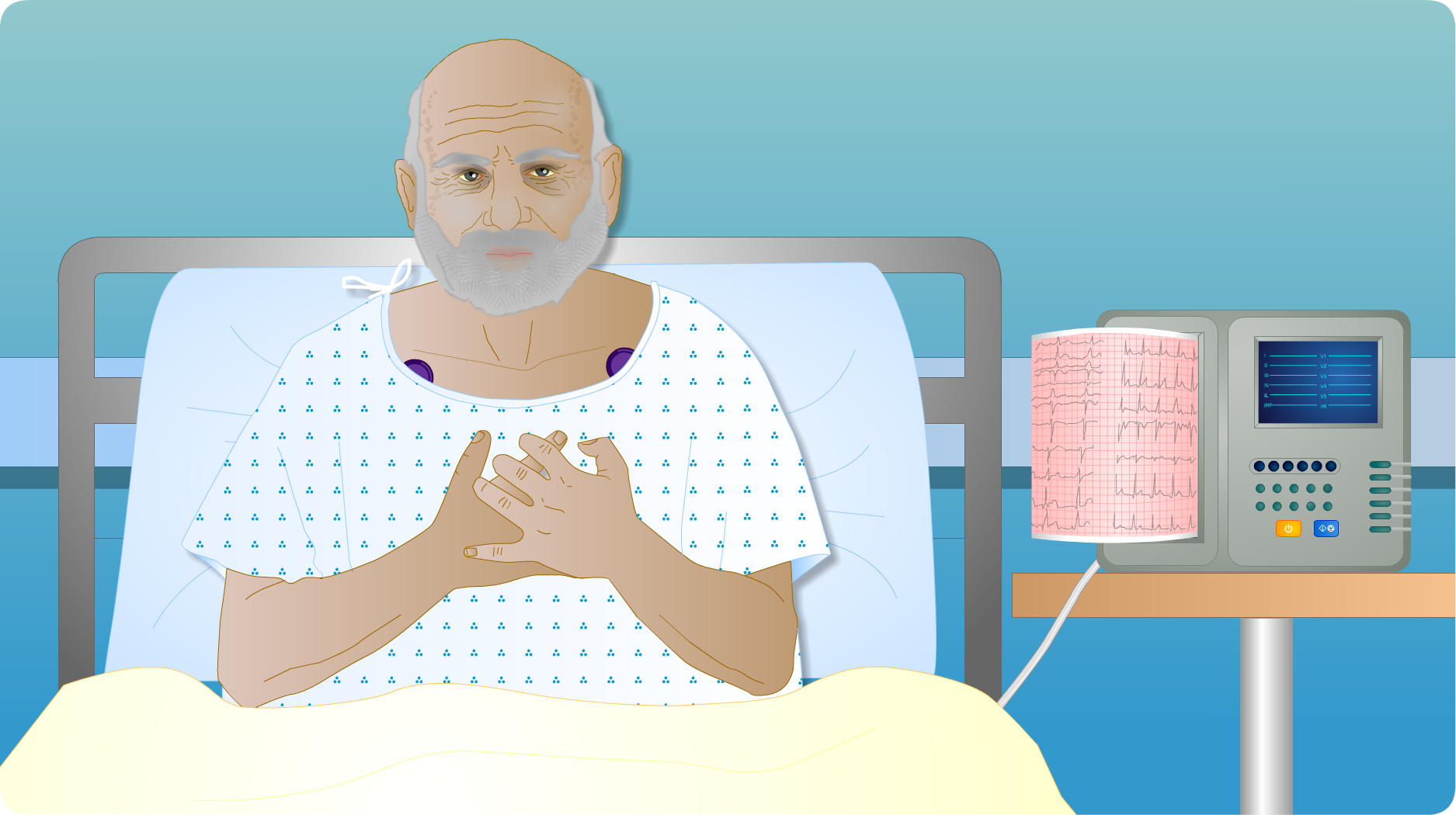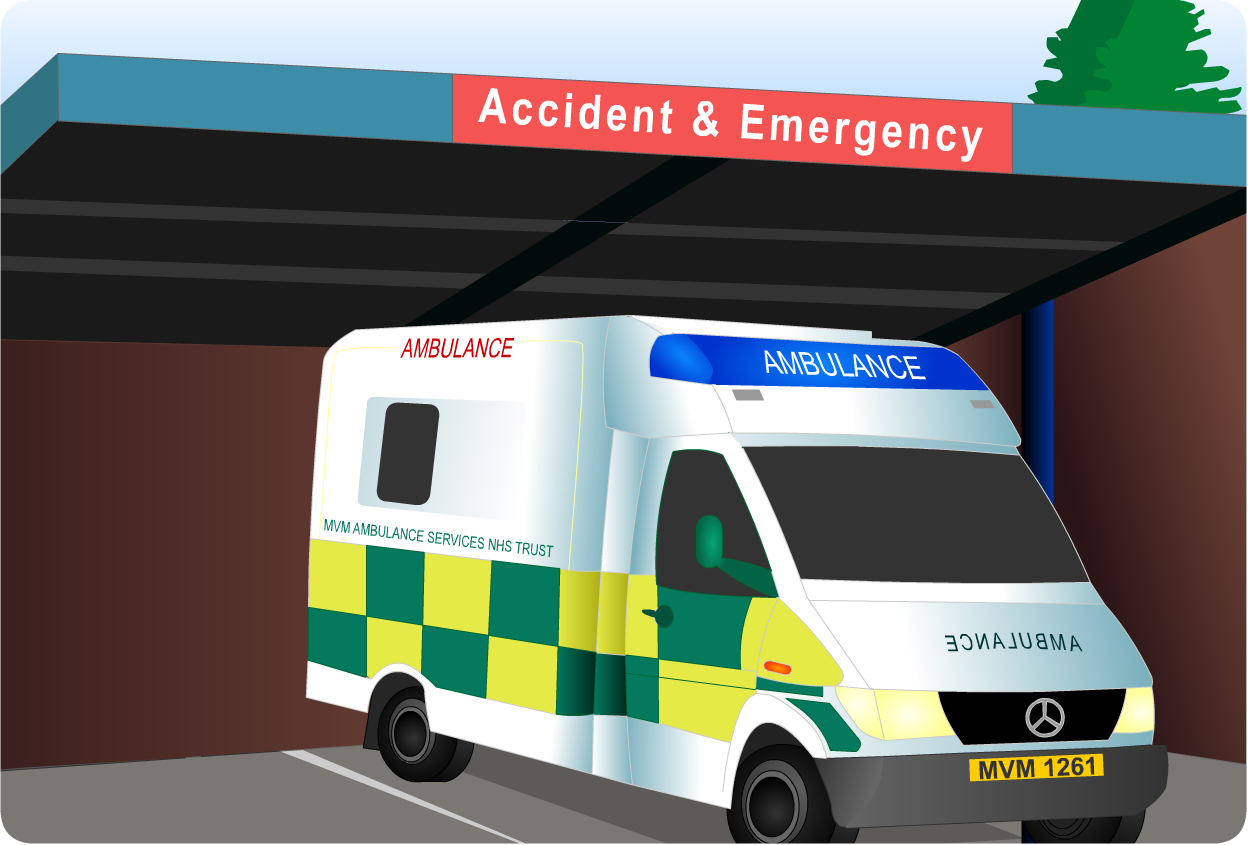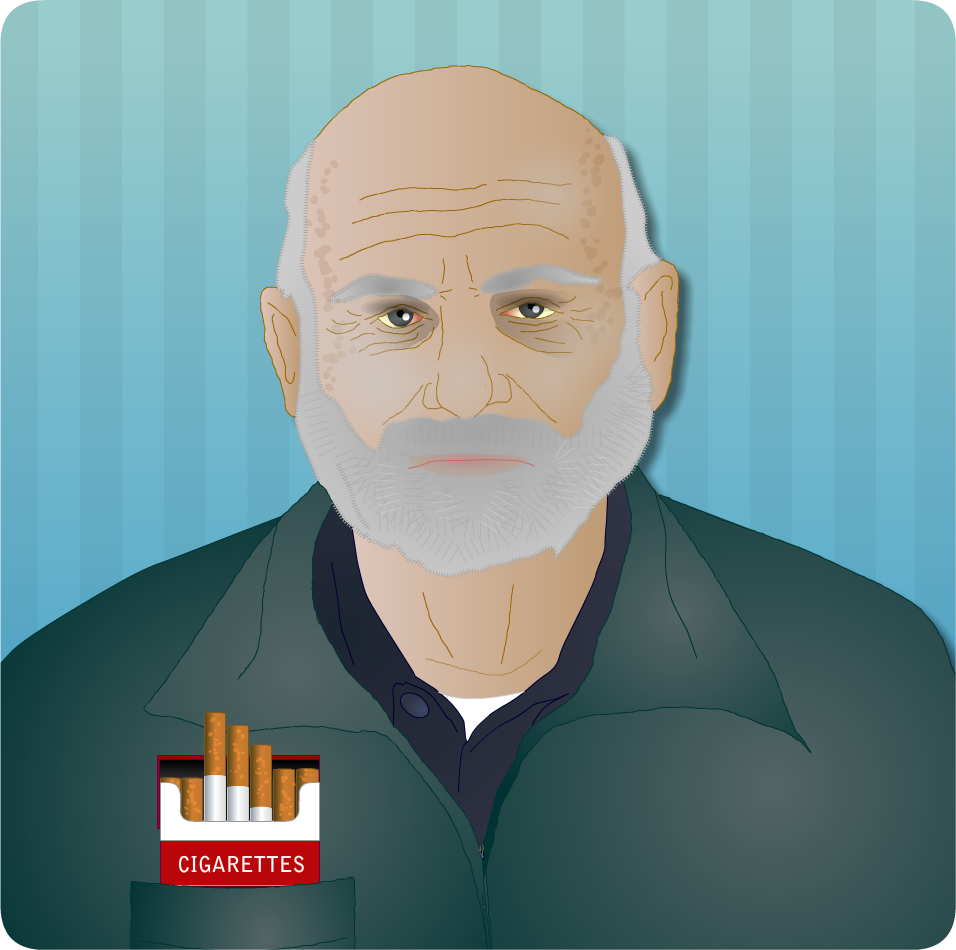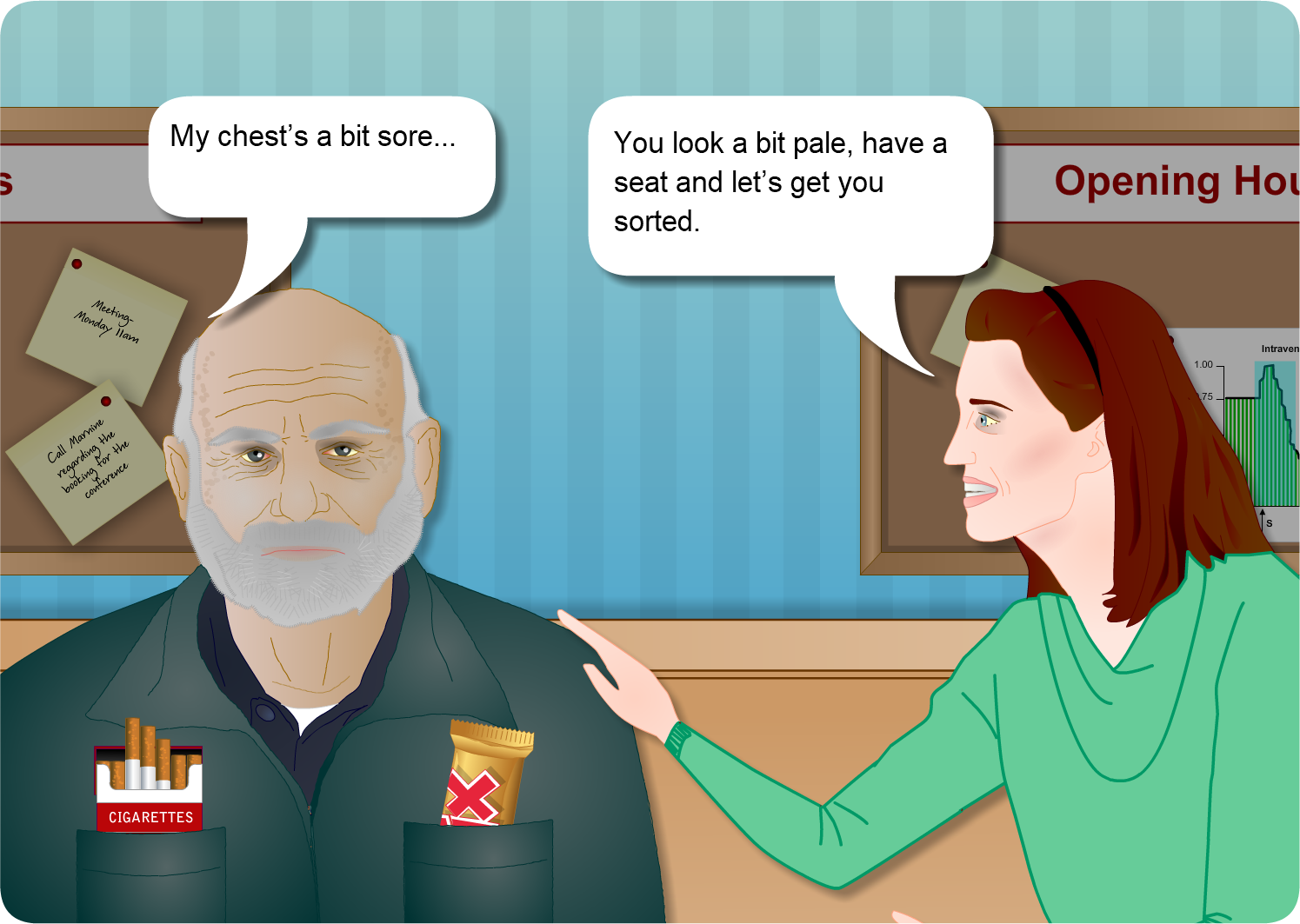Hamish is referred for an urgent coronary angiogram to assess the anatomy of his coronary arteries. (you may wish to review the coronary artery anatomy within module 1).
The nurse explains this procedure to Hamish and Flora and gives him a booklet: British Heart Foundation: Coronary Angioplasty
On transfer to CCU Hamish’s chest pain settles and he is reviewed by a cardiologist and starts ACS and anti-anginal treatment. The cardiologist tells Hamish he has had a small heart attack. This is sometimes referred to as a Non ST Elevation Myocardial Infarction (NSTEMI). He explains that he will require further investigations including coronary angiography. He also requires to be commenced on medication.

Hamish develops further chest pain on return to the ward, he is attached to a cardiac monitor and baseline observations are obtained. Hamish is given opiate analgesia (e.g. morphine) for his chest pain after Glyceryl Trinitrate (GTN) spray is not effective.
He is re-assessed by medical staff who note that his Eletrocardiogram (ECG) showed further abnormal changes on the 12-lead ECG. A repeat Troponin is checked and found to be elevated.
Hamish is transferred to Coronary Care Unit (CCU) for further monitoring.
Hamish has remained pain free since admission. His cardiac markers were normal and his systemic observations were stable. Hamish has been referred to the cardiac nurse specialist for further assessment to establish a diagnosis and stratify his risks.
During his Exercise Tolerance Test Hamish experiences chest pain and the test is stopped. During a 5-minute recovery period where Hamish continues to be monitored, his chest pain resolves and he then returns to the ward. See additional information for indications for terminating the ETT test.
On initial assessment by medical staff, clinical history and symptoms are obtained and differential diagnosis excluded (see additional information for differential diagnosis). In accordance with local protocols an initial management plan is initiated and Hamish is referred for chest pain assessment.
Hamish is referred for chest pain assessment.
The initial assessment of Hamish will allow baseline observations to be determined which will inform the provisional diagnosis.
 Following the 999 call Hamish is admitted to the medical admission unit (MAU). The GP is concerned that Hamish may have unstable angina.
Following the 999 call Hamish is admitted to the medical admission unit (MAU). The GP is concerned that Hamish may have unstable angina.
Hamish is admitted to MAU and is attached to a cardiac monitor to monitor his heart rhythm. This is important because heart rhythm disturbances are common in acute coronary syndromes. In other areas, some patients may be monitored by telemetry, which allows remote monitoring.
Dr Donald reviews the ECG that Iona performed and gives Hamish 300 mg of Aspirin to chew and 2 puffs of GTN spray sublingually. The pain resolves within 2 minutes. (Patients presenting with acute chest pain need to be assessed urgently and have a diagnostic Electrocardiogram (ECG) performed as quickly as possible to determine the correct treatment.)


Hamish is a 75-year old retired fisherman from Aberdeen. He lives with his wife Flora who is 55 years old, she is a keen baker and Hamish finds it difficult to resist her sweet treats! He has been a smoker for 60 years and was diagnosed with type 2 diabetes 18 months ago. Hamish has recently taken up Scottish Country Dancing in an effort to lose some weight. He is aware of the age difference between himself and Flora and feels it has been more noticeable recently as he does not feel that he has as much energy as he used to.
Hamish has an appointment at his local GP Practice for his routine diabetic check. The practice is near his home so he always walks rather than take the car. Whilst walking to the surgery Hamish develops a pain in the centre of his chest which goes through to his back. It feels like “indigestion”, Hamish remembers the lovely pancakes Flora made for breakfast and wishes he had not had second helpings. Hamish mentions the pain to Iona the practice nurse and she notices that Hamish is looking much paler than normal she decides to perform a 12 Lead ECG, and requests that GP Dr Donald review Hamish.

 Following the 999 call Hamish is admitted to the medical admission unit (MAU). The GP is concerned that Hamish may have unstable angina.
Following the 999 call Hamish is admitted to the medical admission unit (MAU). The GP is concerned that Hamish may have unstable angina.



